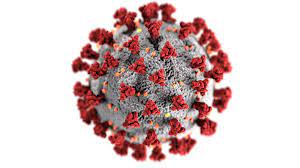What are the pros and cons of a COVID-19 LFT vs PCR test?
In this article, we will discuss the pros and cons of a COVID-19 LFT vs a PCR test.

Why is a COVID-19 LFT test done?
A LFT test is an ‘antigen test’. It is a quick reliable (but not perfect) test for COVID-19. This is why it is done. In other words it is used as a first simple test for COVID-19. It has the advantage of being able to be done in 10 minutes at home (but is less accurate).
Similar to a pregnancy test, one line on the test card means negative and two lines means positive.
Pros and cons of a a COVID-19 LFT test
The pros are the speed, simplicity – and low cost.
But antigen tests (like LFTs) do have drawbacks. When a person is symptomatic or has a lot of virus in their system, antigen tests are very accurate. However, unlike molecular PCR tests (see below), antigen tests don’t amplify the thing they are looking for. This means there needs to be enough viral antigen in the sample for the antibodies on the test strip to generate a signal.
When a person is in the early stages of infection, there is not a lot of virus in the nose and throat, from which the samples are taken. So, antigen tests can miss early cases of COVID-19. It’s also during this stage that a person has no symptoms, so they are more likely to be unaware they are infected.
Why is a COVID-19 PCR test done?
If is necessary to definitely confirm (or refute) the result of a LFT test, a more reliable COVID-19 polymerase chain reaction (PCR) test needs to be done.
PCR is the most reliable and accurate test for detecting active COVID-19 infection. This is why it is done. In other words it is used to check the result of a COVID-19 lateral flow test (LFT). That has the advantage of being able to be done in 10 minutes at home (but is less accurate).
Pros and cons of a COVID-19 PCR test
Amplifying the genetic material makes detecting even the smallest amount of a virus easy. PCR tests can also differentiate between different virus variant (or strains). Since these tests examine microscopic bits of a virus’s genetic material, they are highly reliable – often close to 100%.
Although more accurate, it has the disadvantage of needing to sent to the lab, and it sometimes takes 2-3 days to get the result. They are also quite expensive.
Summary
We have described the pros and cons of a COVID-19 LFT vs PCR test. We hope it has been helpful.

